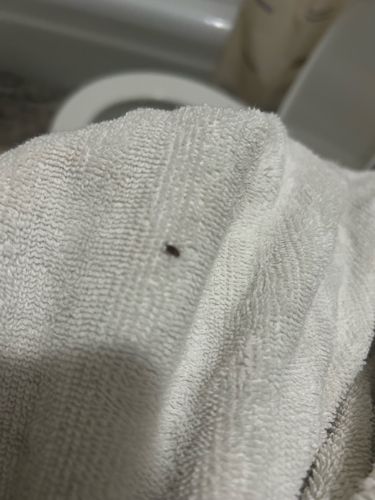Carpet Beetle (likely Varied Carpet Beetle or Black Carpet Beetle)
Scientific Name: Trogoderma variabile (Varied Carpet Beetle) or Attagenus unicolor (Black Carpet Beetle) - precise identification requires a clearer image.
Order & Family: Order: Coleoptera, Family: Dermestidae
Size: Adults typically range from 2-5 mm (0.08-0.2 inches) in length. Larvae can be slightly larger, up to 7 mm (0.28 inches).

Natural Habitat
Indoors, carpet beetles are found in closets, drawers, under furniture, in cracks and crevices, attics, and anywhere dander, lint, or food crumbs accumulate. Outdoors, adults are found on flowering plants.
Diet & Feeding
Larvae feed on a wide range of animal-based materials including wool, felt, furs, feathers, silk, animal hides, decaying animal carcasses, dried pet food, and sometimes even plant-based materials like cereals, spices, and pasta. Adult carpet beetles primarily feed on pollen and nectar outdoors.
Behavior Patterns
Carpet beetles undergo complete metamorphosis. The adults are usually active flyers and are attracted to light, or they may be found on flowers outdoors. Indoors, they often congregate around windows. The larvae are the damaging stage, shunning light and preferring to live in dark, undisturbed areas where they feed on a variety of animal and plant products. They can be found in carpets, rugs, upholstered furniture, clothing, and stored food products.
Risks & Benefits
Risks: Carpet beetle larvae can be significant pests in homes and museums, causing damage to natural fibers (wool, silk, fur, feathers), upholstered furniture, carpets, stored food, and insect collections. They do not bite humans, but some people can develop allergic reactions (dermatitis or respiratory irritation) to the larval hairs. Benefits: In nature, dermestid beetles, including carpet beetles, play a role as scavengers, breaking down organic matter, particularly animal remains.
Identified on: 8/9/2025